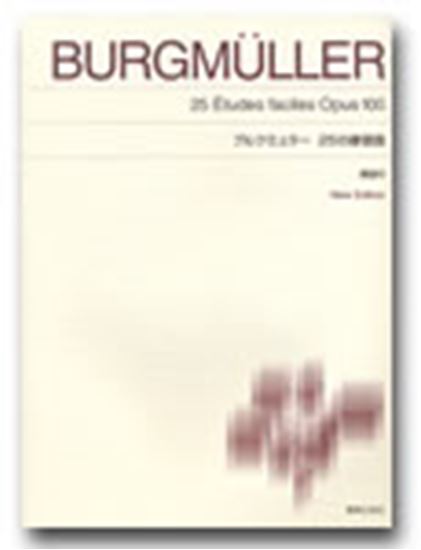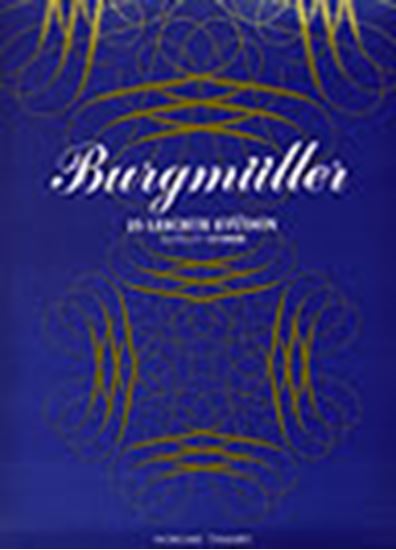Burgmüller, Johann Friedrich Franz : 25 Etudes faciles et progressives, conposées et doigtées expressément pour l'étendue des petites mains La gracieuse Op.100-8
Work Overview
Genre:etude
Total Playing Time:1 min 00 sec
Copyright:Public Domain
Additional Notes:表記ゆれの例: きれいなやさしさ 優しく美しく うつくしく
Commentary (3)
Author : Sato, Takashi
Last Updated: January 31, 2022
[Open]
Author : Sato, Takashi
This is an exercise in gracefully executing the “turn” ornament, which frequently appears in Classical works. In measure 5, a borrowed dominant of the II degree appears for the first time in the collection. Play, savoring the poignant sound. The final pp in the right hand in measure 8 was the highest note on many pianos of that era. Children of that time must have proudly played these rightmost keys, which were not often used. At this point, be careful not to miss the left-hand leaps by focusing solely on the right hand. From measure 9, imagining a duet between male and female voices will help you play beautifully.
Performance Points (Original Tempo ♩=100)
First, try playing the melody as quarter notes, removing the 32nd notes of the turn. Then, quietly reintroduce the turns, being careful not to disrupt the underlying structure. Play with the image of constantly moving forward, ensuring that the motion does not stop on the eighth notes of the main beats. The descending passage in measures 5 and 6, especially the “B-A-G#-A” figure on the off-beat of beat 2, is a difficult section. Ensure that the 3rd finger strikes the key firmly. The right hand has an eighth rest on the off-beat of beat 3, so you might want to lift your hand from the keyboard, but there are cases where this doesn't work well due to focusing on the left-hand accompaniment pattern.
(From To-on Edition “Burgmüller 25 Etudes” (NS70))
Author : Iida, Arisa
Last Updated: March 15, 2018
[Open]
Author : Iida, Arisa
Musical example provided by: Ongaku no Tomo Sha
Author : Ooi, Kazurou
Last Updated: January 31, 2019
[Open]
Author : Ooi, Kazurou
This piece is particularly challenging musically within this collection of etudes. While the technical aspects may not be overly difficult, it requires ingenuity to make it musically engaging.
First, there is the challenge of how to handle the articulation of the left hand on each third beat in measures 1-6. Whether to play it as a staccato, a semi-staccato, or with pedal will significantly alter the atmosphere. Teachers are encouraged to decide this in consultation with their students.
Next, regarding the right-hand technique (and the left hand in measures 9-10, 13-14), the execution of the 32nd notes is crucial. The author played this piece for two days and found that the more mechanically, or "computer-like," these 32nd notes were processed, the stiffer the piece sounded. The tips are as follows:
- Play as pp and leggiero as possible.
- Consider the upcoming eighth note together with the 32nd notes, playing the five notes (32nd x 4 + 8th x 1) in one continuous motion.
- For example, the first beat of measures 1-2 begins with an eighth note; apply a slight tenuto to this eighth note, making it slightly longer than its actual value. Consequently, compress the 32nd notes that follow.
This means the 32nd notes will be played somewhat faster than their actual tempo.
Be careful with point 3; it should not be too obvious. Play the downbeat slightly longer and the upbeat slightly shorter, just enough so it's not noticeable. This will make it sound smoother.
The cresc. written in measure 11 clearly leads to the forte in measure 12, but harmonically, it is a resolution chord. Whether to play the chord on the first beat of measure 12 louder or softer than measure 11 is a matter of preference.
This piece might be one that should consistently be played dolce and p. Even if forte is written in measure 12, it might not be played that loudly.
In the first half, within the first eight measures, the only place where the tension and volume rise slightly is in measure 5. Otherwise, the basic instruction is to maintain p and convey a graceful, elegant feeling.
Arrangements & Related Works(3)
PTNA & Partner Channel Videos(19items) View More
Sheet MusicView More
Scores List (24)

(株)東音企画(バスティン)

(株)東音企画(バスティン)

(株)東音企画(バスティン)

(株)全音楽譜出版社

(株)ドレミ楽譜出版社

(株)音楽之友社

KMP(ケイ・エム・ピー) ケイエムピー

(株)ドレミ楽譜出版社

ハンナ(ショパン)

(株)ヤマハミュージックエンタテインメントホールディングス

デプロMP

(株)ドレミ楽譜出版社

(株)全音楽譜出版社

(株)ドレミ楽譜出版社

カワイ出版

カワイ出版

デプロMP

(株)ヤマハミュージックエンタテインメントホールディングス

デプロMP

(株)音楽之友社

(株)共同音楽出版社

Neil A. Kjos Music Company



















